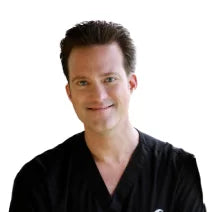Hairloss and Hair Rejuvenation: What You Need To Know
What Is Androgenic Alopecia?
Androgenic alopecia is a common type of hair loss that affects millions of people. It is often called male pattern baldness or female pattern hair loss. This condition is caused by a mix of genetics and hormones. People who have family members with this condition are more likely to get it too. It happens slowly over time and usually starts in adulthood, though it can begin during the teenage years.
In males, androgenic alopecia usually starts with a receding hairline or a bald spot at the top of the head. Over time, the hair gets thinner and may stop growing in certain areas. In females, the pattern is different. Women don’t usually go completely bald, but their hair becomes thinner all over, especially on the crown or the part line. While this type of hair loss is not dangerous, it can affect how people feel about their appearance.
The cause of androgenic alopecia is linked to a hormone called dihydrotestosterone, or DHT. This hormone affects hair follicles by shrinking them. When hair follicles shrink, they produce thinner and shorter hairs. Eventually, the hairs stop growing altogether. Since DHT is connected to testosterone, men are more commonly affected than women, but both can have this condition.
There are treatments available for androgenic alopecia, but they don’t work the same for everyone. Some people use medicines like minoxidil or finasteride to slow down hair loss or help hair grow back. Others might try laser treatments or hair transplants. While these treatments can help, they may take time to show results. It’s important for people to talk to a doctor to find the best option for them.
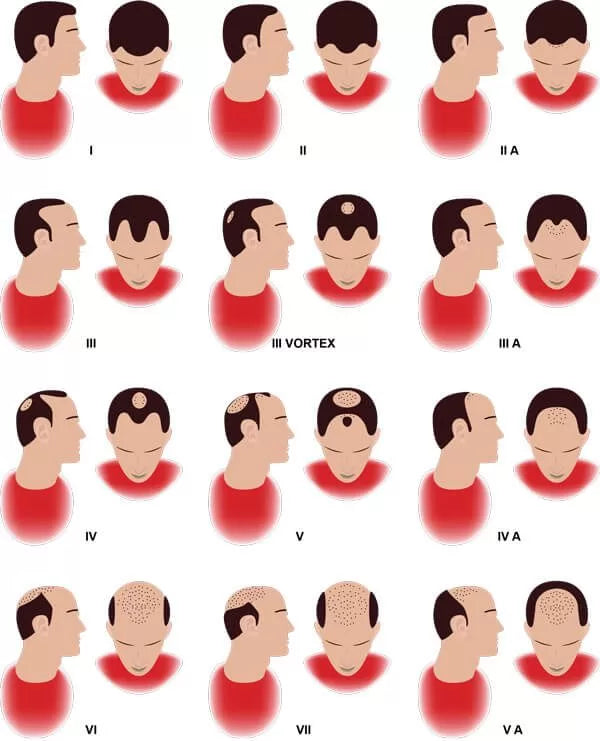
The Hamilton-Norwood scale, showing common patterns and progression of androgenic alopecia in men.
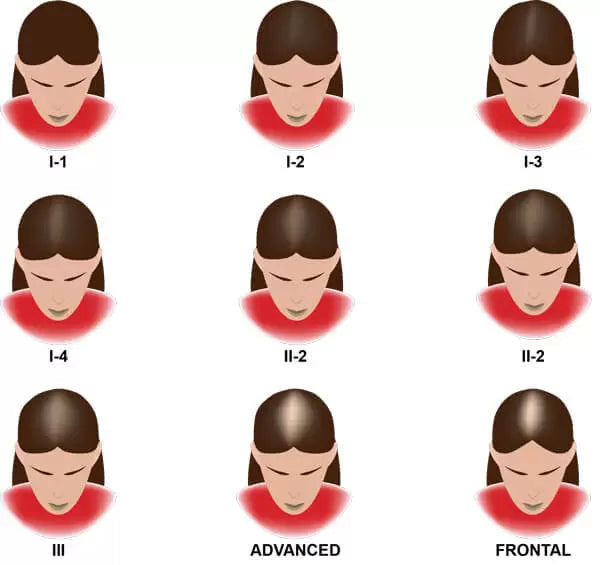
The Ludwig-Savin scale, showing common patterns and progression of androgenic alopecia in women.
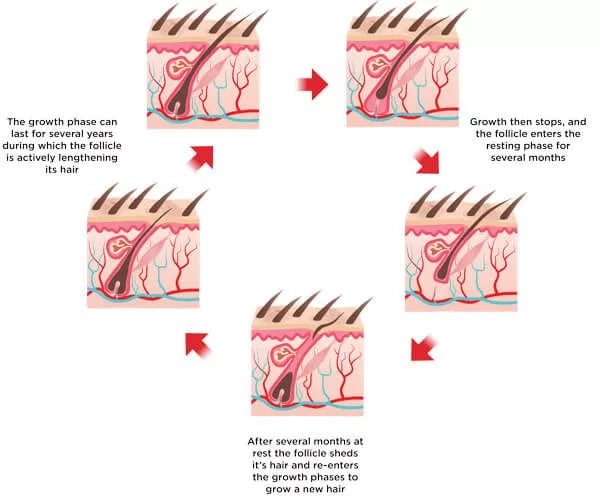
Hair Growth Cycle
Hair grows in a cycle that has three main stages: the anagen, catagen, and telogen phases. The anagen phase is the growth stage, where hair actively grows from the root. This stage can last several years. The next stage is the catagen phase, which is a short resting period when the hair stops growing. After that comes the telogen phase, where the hair falls out and the follicle rests before starting a new growth cycle.
When someone has hair loss, it usually means something has changed in this cycle. For example, in conditions like androgenic alopecia, the growth (anagen) phase becomes shorter, and the hairs spend more time in the resting (telogen) phase. As a result, the hair becomes thinner and falls out more often, and new hairs may not grow back properly. Understanding the hair growth cycle helps doctors figure out what might be causing hair loss and how to treat it.
Low-level laser therapy
Multiple studies have shown that low-level laser therapy (LLLT) is effective for promoting hair growth in both men and women with pattern hair loss. A 2014 randomized controlled trial published in The American Journal of Clinical Dermatology found that participants using laser combs had significantly increased hair density compared to those using a placebo. Another study demonstrated that LLLT can improve hair thickness and strength while reducing shedding. Research also shows that LLLT works well when combined with other treatments like minoxidil or finasteride, enhancing overall results by stimulating dormant hair follicles and extending the hair growth phase. Overall, LLLT is considered a safe and effective option for treating hair thinning. This is an FDA-certified treatment for hair loss.
Jimenez JJ, Wikramanayake TC, Bergfeld W, Hordinsky M, Hickman JG, Hamblin MR, Schachner LA. Efficacy and safety of a low-level laser device in the treatment of male and female pattern hair loss: a multicenter, randomized, sham device-controlled, double-blind study. Am J Clin Dermatol. 2014 Apr;15(2):115-27. doi: 10.1007/s40257-013-0060-6.
Darwin E, Heyes A, Hirt PA, Wikramanayake TC, Jimenez JJ. Low-level laser therapy for the treatment of androgenic alopecia: a review. Lasers Med Sci. 2018 Feb;33(2):425-434. doi: 10.1007/s10103-017-2385-5. Epub 2017 Dec 21.
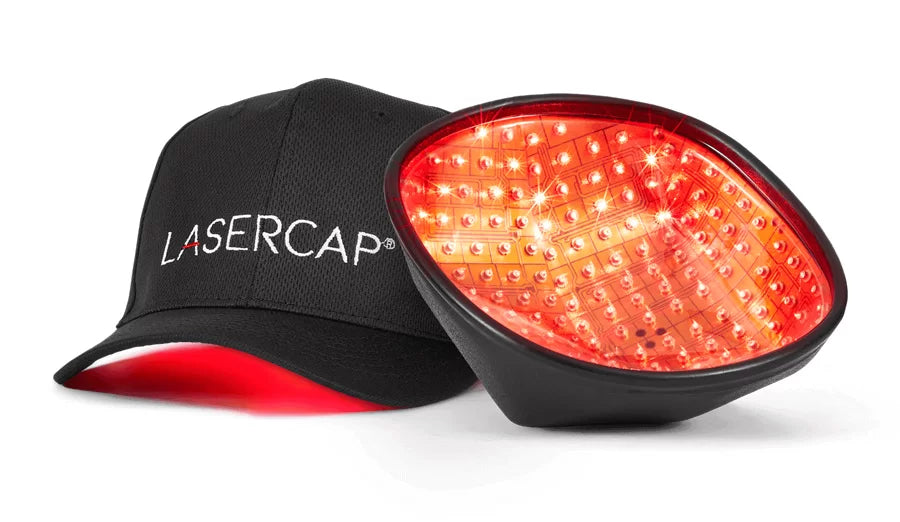
How it works
Low-level laser therapy (LLLT) uses true laser diodes that emit monochromatic red light to stimulate hair follicles. This FDA-cleared treatment promotes hair regrowth in men and women by triggering photobiomodulation. This process activates mitochondrial enzymes to boost cellular energy and improve follicle viability. Miniaturized hair follicles absorb the red light, encouraging them to remain in the anagen (growth) phase.
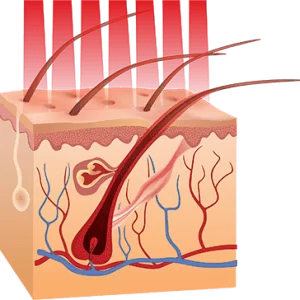
Can Laser Therapy Cause Damage?
While generally safe, some users may experience temporary shedding, scalp dryness, itching, or redness. You may feel some heat to the scalp when undergoing therapy. However, permanent damage is extremely rare, though direct eye exposure to the lasers should be avoided.
In Addition to Low Level Laser Therapy, What Therapies Can Be Used To Help With Hair Loss?
Hair transplants are the most robust treatment for restoring hair, but they don’t prevent future hair loss in areas that weren't treated. That’s why it’s important to use other treatments to help keep both transplanted and existing hair healthy.
Finasteride (Propecia) is a pill that helps keep hair in the growing phase by blocking a hormone called DHT. It can take a few months to see results. It’s helpful for keeping the hair you already have, but it may cause side effects like trouble with erections, breast growth, or feeling sad. You need a doctor’s prescription to get it. There are also sprays and creams with finasteride, and the results look promising.
Minoxidil (Rogaine) is a treatment you put directly on your scalp. It can help keep your hair healthy and can work well with finasteride. Some people notice more hair shedding at first, but that usually goes away. It can sometimes cause scalp irritation. There’s also an oral version, but it may affect your blood pressure and cause other side effects.
Platelet-Rich Plasma (PRP) is a treatment where doctors use your own blood to help your hair grow. It can work, but it’s expensive, requires repeated regular treatments, and can be painful.
Exosome therapy is another option, but it’s very expensive and not yet approved by the FDA. Scientists are still studying if it’s safe and effective.
Other pills like oral minoxidil or spironolactone might help too, but they can have serious side effects and must be prescribed by a doctor.
In general, most patients require one or several treatments to maintain your hair. Most specialists that deal with hair loss will recommend a combination of therapies.
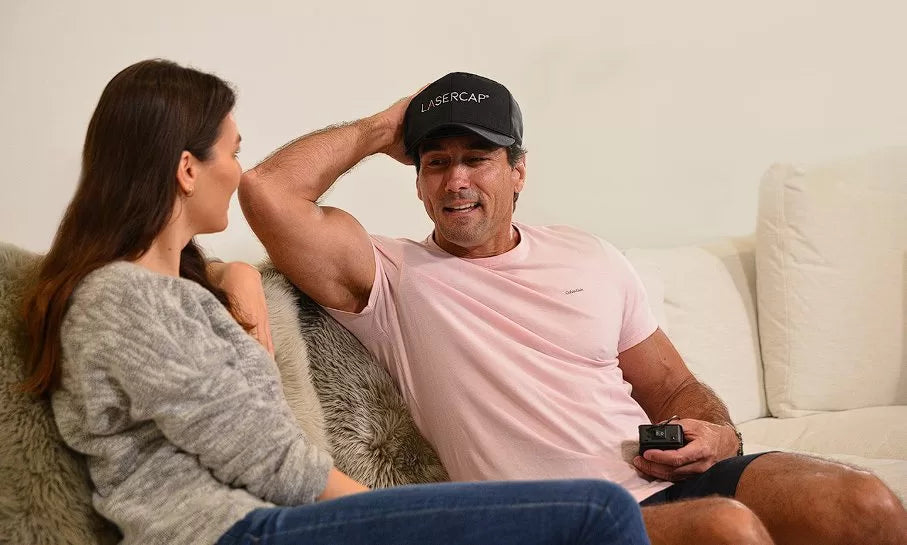
Frequently Asked Questions
How Can I Buy a Lasercap?
You may buy LaserCap through this website or from an authorized LaserCap provider. To buy through the website, go to Get Started and choose your LaserCap kit.
How Long Does It Take To See Results?
If you use our hair growth hat consistently, you can see a noticeable difference in your hair’s density within four to six months of starting treatment.
Is LaserCap Suitable for Both Men and Women?
Yes. LaserCap is effective in treating pattern hair loss in both men and women.
What Are the Side Effects of LaserCap?
LaserCap is an FDA-cleared medical device proven to be safe and well-tolerated by most people. A small portion of LaserCap users may experience slight itchiness of the scalp or mild headache while receiving low-level laser therapy. These side effects are temporary and would only occur during treatment.
Can I Use LaserCap With Other Hair Loss Treatments?
Most dermatologists and hair treatment experts recommend using a combination of therapies because they often work better together. Studies have shown that using multiple treatments can help reduce inflammation, speed up healing, and improve the survival of hair grafts after a transplant. For example, a 2014 study showed better healing after hair transplant surgery, and a systematic review from 2025 found that laser therapy worked well when combined with minoxidil. When used with finasteride, laser therapy also helped regrow hair in the top and middle of the scalp by waking up the sleeping hair follicles and supporting finasteride’s effect of lowering DHT.
Comparative efficacy and safety of low-level laser therapy and topical Minoxidil combination vs. topical Minoxidil monotherapy in androgenetic alopecia management: a systematic review and meta-analysis of randomized controlled trials.
Avci P, Gupta GK, Clark J, Wikonkal N, Hamblin MR. Low-level laser (light) therapy (LLLT) for treatment of hair loss. Lasers Surg Med. 2014 Feb;46(2):144-51. doi: 10.1002/lsm.22170
Mawu FO, Sondakh ORL, Kairupan TS, Christopher PM. Comparative efficacy and safety of low-level laser therapy and topical Minoxidil combination vs. topical Minoxidil monotherapy in androgenetic alopecia management: a systematic review and meta-analysis of randomized controlled trials. Lasers Med Sci. 2025 Aug 19;40(1):338. doi: 10.1007/s10103-025-04593-7.
Can I Maintain My Hair After Stopping LaserCap?
The LaserCap is proven safe for long-term use. Like other non-surgical hair loss treatments, your results will decline over time if you stop using our LLLT device.
Is LaserCap Effective for All Hair Loss Patients?
Because it’s a non-surgical hair loss treatment, LaserCap results can vary between patients. Low-level laser therapy can reverse hair loss in some people. For others, LLLT devices can slow or stop the progression of hair loss. If you have advanced balding, LaserCap alone will likely not help you achieve meaningful results.
How Many Different Types of LaserCaps Do You Offer?
We offer three different LaserCap options: LaserCap SD, LaserCap HD, and LaserCap HD+. These hair growth hats differ in price, energy dosage, and area of coverage. Visit our Get Started page to learn more about the different LaserCap options.
Real People.
Real Results.
For over a decade, we have helped tens of thousands of men and women treat their hair loss. Check out these before and after photos to see what LaserCap can do for you.
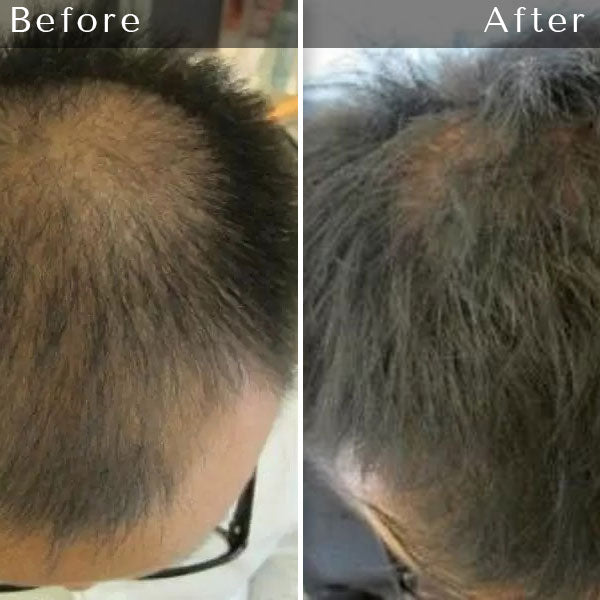
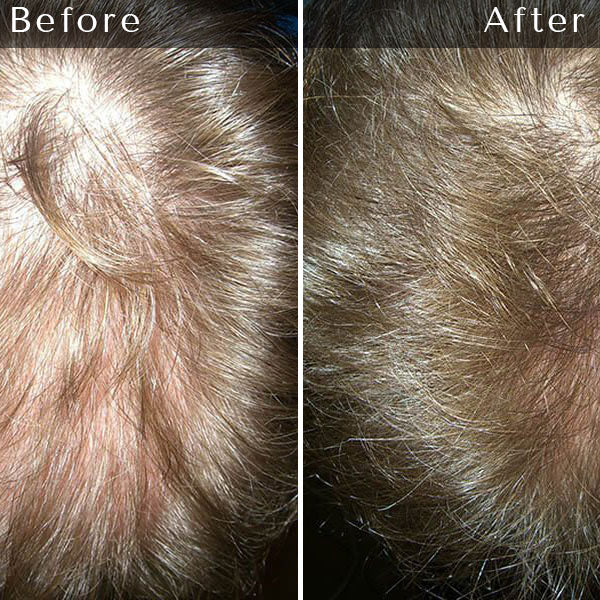
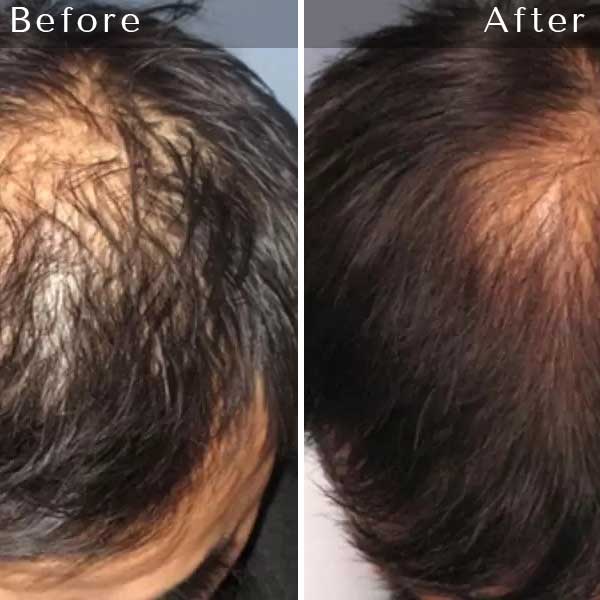
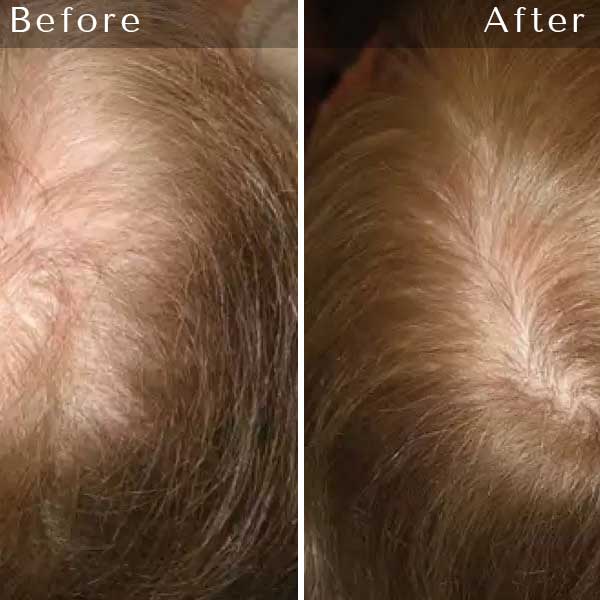
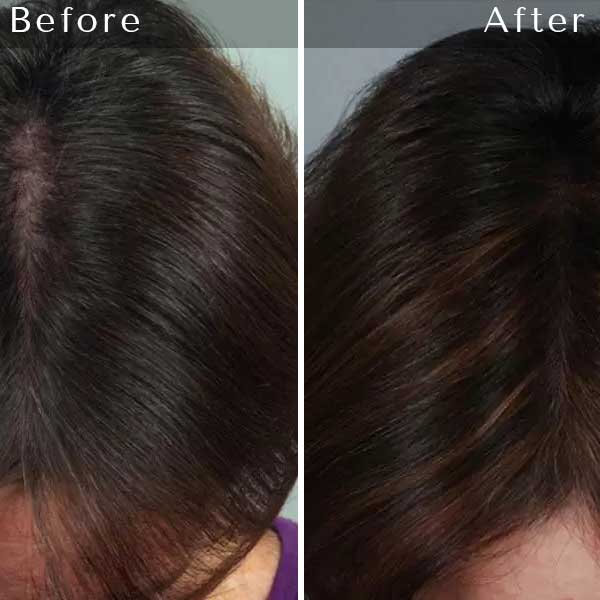
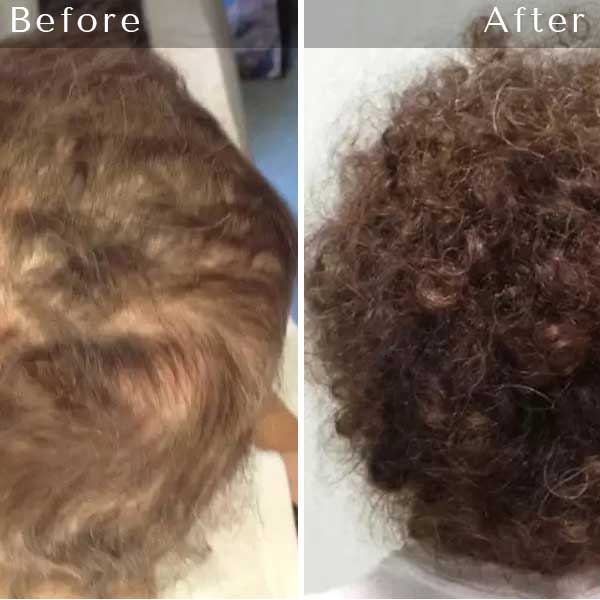
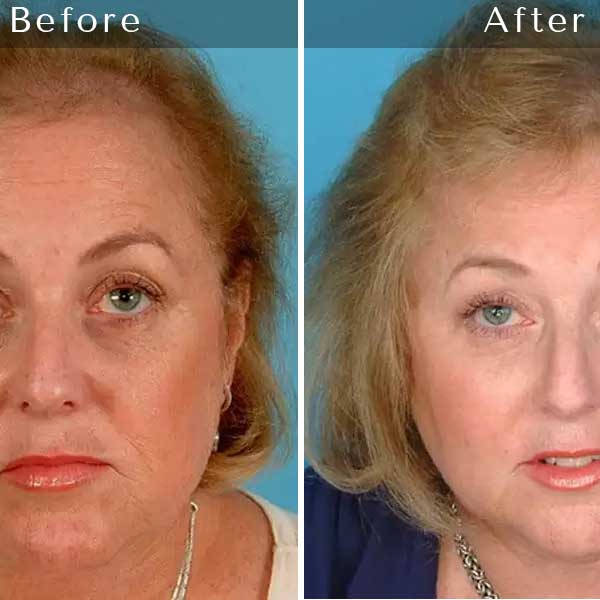
Our LaserCap offers the best warranty on the market!
The LaserCap Lifetime Limited Warranty Policy covers against defects in materials or workmanship from date of purchase with proof of purchase. If a LaserCap device is determined to be defective within five (5) years from date of purchase, LaserCap Company will repair, or replace with a like model, free of charge. After five (5) years from date of purchase, LaserCap Company will repair a device for a charge dependent on the scope of repair, or replace a device for a charge equal to 25% of current MSRP, plus shipping and handling. LaserCap Company reserves the right to decide whether a repair or replacement will be offered for a defective device.
If a LaserCap powerpack or powerpack charger is determined to be defective within one (1) year from date of purchase, it will be replaced free of charge. After one (1) year from date of purchase, a new powerpack or powerpack charger must be purchased by the user. Other accessories are not covered by warranty and must be purchased by the user.
Note that failure to use and care for the LaserCap as instructed will void the product warranty.
If a replacement part or accessory, including but not limited to the powerpack, wall charger, and LaserCap baseball cap, is not covered under warranty, they may be purchased online at lasercap.com/product-category/replacement-parts-and-accessories/, or by contacting LaserCap Company by phone or email.
Customers must register their LaserCap device after purchase to be eligible for warranty service. To register your device please go to: lasercap.com/warranty-registration-form/
To initiate a warranty claim please call +1 855-424-7774, or email info@lasercap.com.





